|
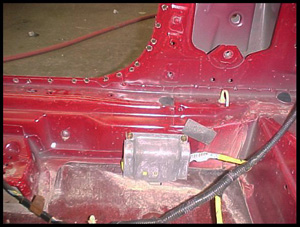
|
| Click picture to enlarge |
Like
the frontal airbags; side impact airbags must have a crash sensor to recognize that a crash has accured. These sensors are
usually mounted in the frond door, the B post, or most are located inside of the rocker panel just below the B post.
Also like the frontal sensors; these sensors must experience
an impact from a certain direction to deploy an airbag. Each side is operated by its own sensor, the right side will not deploy
if the vehicle is hit in the left side and the left side will not deploy if the vehicle is hit in the right side.
Many times, it is hard to answer questions as
to why an airbag did or did not deploy. The signal from these sensors often times can be canceled by the occupant
position or weight sensors if an infant or out of position passenger is detected. Other times these airbags are incorperated
into a roll over protection system and may be deployed by recieving a signal from the roll over sensor.
Due to the proximity of the occupant to the intruding force,
side impact airbags deploy much faster than frontal airbags.
Caution!
Since the introdution of side impact airbags; a lot of manufacturers
are offering at least six airbags in their vehicles as standard equipment and all manufacterers are at least offering them
as options:
·
The driver’s dual stage frontal airbag
·
The passenger’s dual stage frontal airbag
·
Both front seat or door mounted side impact airbags
·
Both curtain airbags
With each side being controled seperatly and having to be
impacted from a certain angle and the frontal airbags having to be impacted from the front, it is nearly imposible for all
the airbags in one vehicle to be deployed in a single crash.
Warning! Recuers must remember!
They will always have
some loaded airbags to deal with in every crash.


|
| Click picture to enlarge |
Door mounted airbags
are usually a torso type airbag, used to protect the occupants abdomen and pelvic areas.
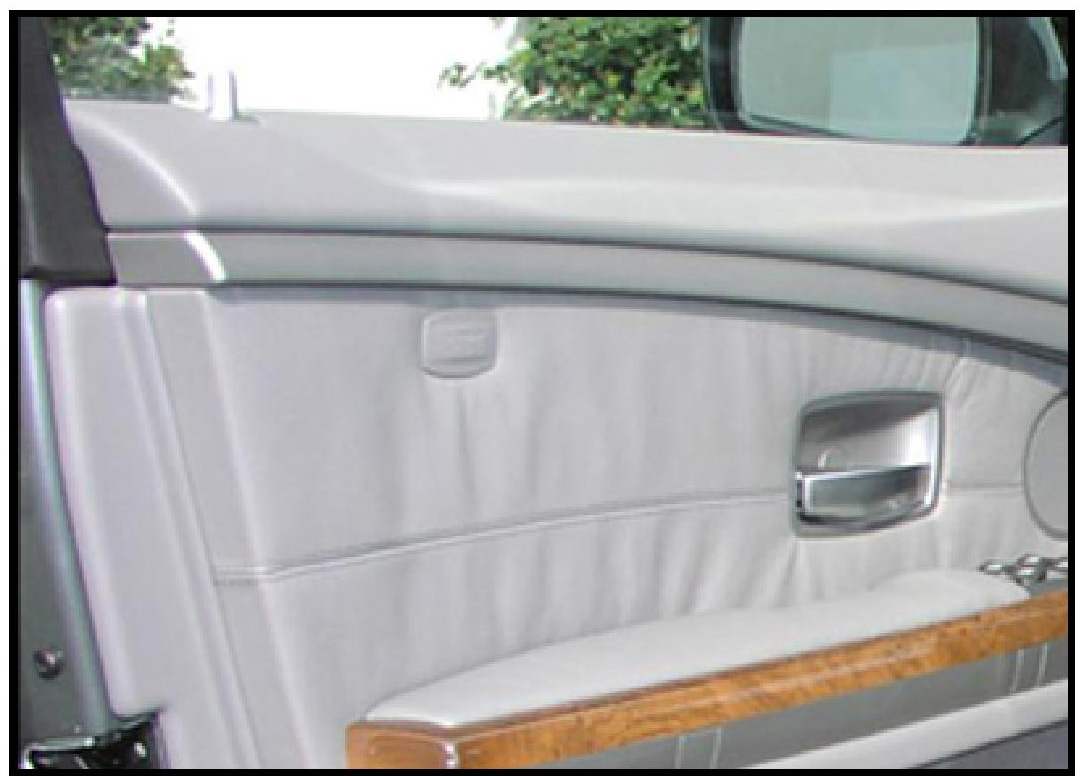
|
| Click picture to enlarge |
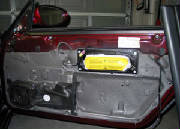
|
| Click picture to enlarge |
Some are totally hidden and deploy through
the trim panel itself.
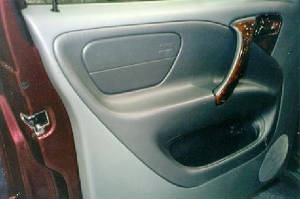
|
| Click picture to enlarge |
Others are easily seen as blowout panels.
Like other side impact
airbags, these also use a stored gas inflator. Most all of these are mounted just to the rear of the center line of the
door toward the nadir pin.
The deployment zone is from the center of the door to the center
of the B post and five inches out from the door panel.
Warning! During rescue
operations; if the bag is deployed it is safe to work around, again there are no dual stage airbags made but, if
it is not deployed rescuers must stay out of the deployment zone.
Caution!
If the door can be opened, even after the electrical system is shut down; rescuers should always tie the door open with
a rope or strap to assure that it does not partially close again, putting them in the deployment zone. Never use a prop, these
can be easily kicked out, or become a tripping hazard.
If the door is to be removed;
always lay the door in the debris pile with the airbag pointing up. If an accidental deployment where to accrue the bag will
deploy into the air rather than against the ground, causing the whole door to fly up. It is also a good idea to lay all loaded
airbags in a separate area, away from all work areas. All airbags are subject to deploying from static electricity.

Door Mounted Inflatable Curtain
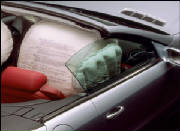
|
| Click picture to enlarge |
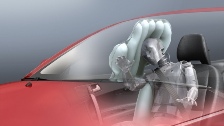
Though mounted in the door
these are actually a curtain type airbag that has recently been developed for use in convertibles. These bags deploy straight
up from the top edge of the door panel and extend to about the roof level. Like all side impact airbags they have a small
stored gas inflator mounted inside the door panel. Also like the others these only have a small emblem embedded in the trim
indicating their location.
Warning!
Rescuers must be aware that the later model convertibles are no different than hard tops when approaching
them. Never lean over the door, these deploy upward with the same speed and force as the curtain airbags do with downward
force.
Caution!
Many rescuers have been taught to pinch the center of the door with the hydraulic spreaders to acquire a purchase point when
popping a door. This is very dangerous on later model vehicles; because not only these, but all door mounted airbags have
a stored gas inflator mounted behind the trim panel that can not be seen.

Seat Mounted Side Impact Airbags
There are two types of seat mounted airbags, the Torso type and the Head / Torso type. These are mounted in
the edge of the back rest portion of the seat.
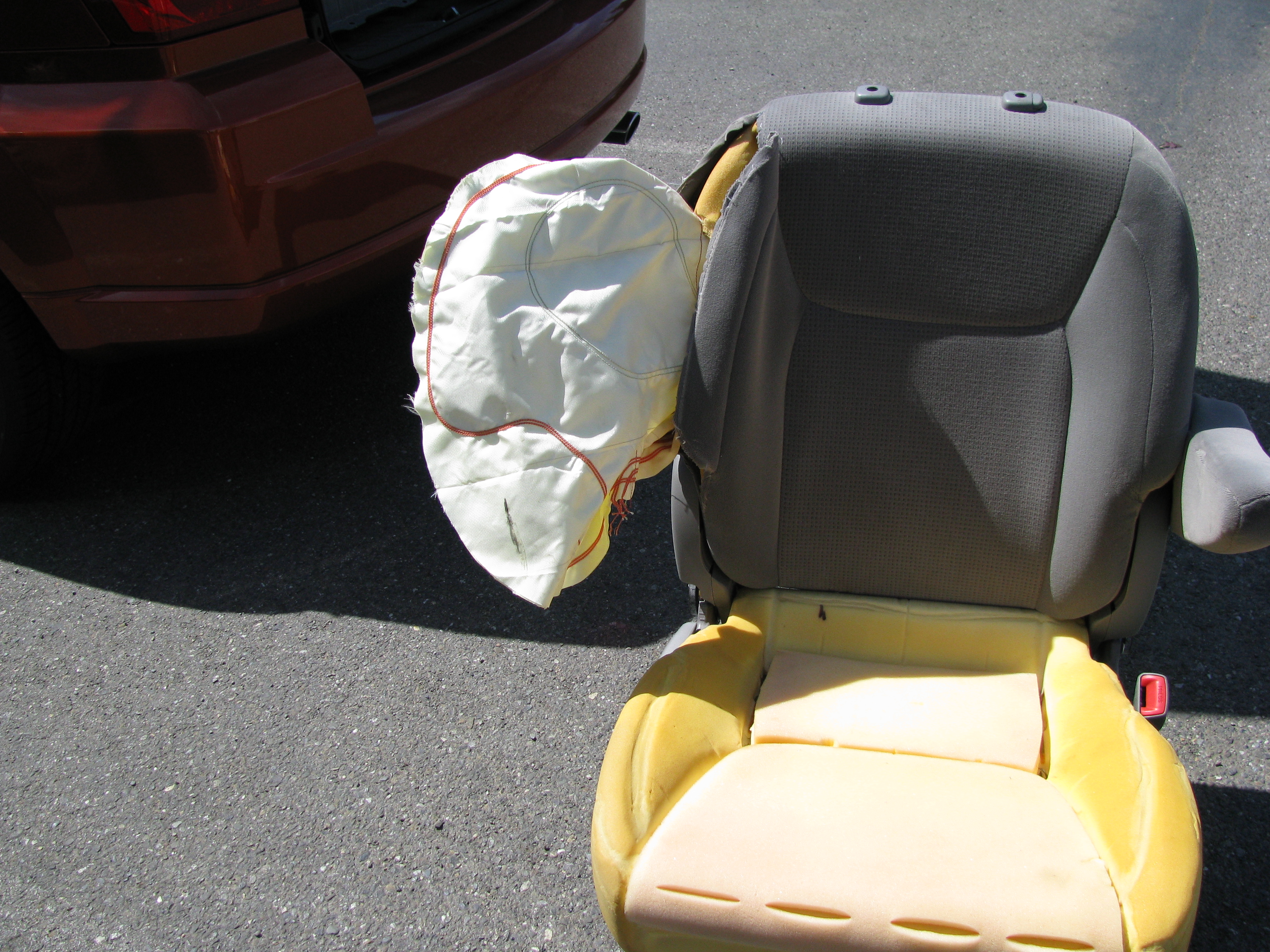
|
| Click picture to enlarge |
The torso type extends outward from the seat about 12 inches and upward about 12 inches and are about 5 inches thick
when deployed.
This type is also used as rear seat side impact airbags and some times extend outward 3 to 6 inches longer than when
used in front seats.
This type is also the one used in conjunction with the tube type head protection
system.
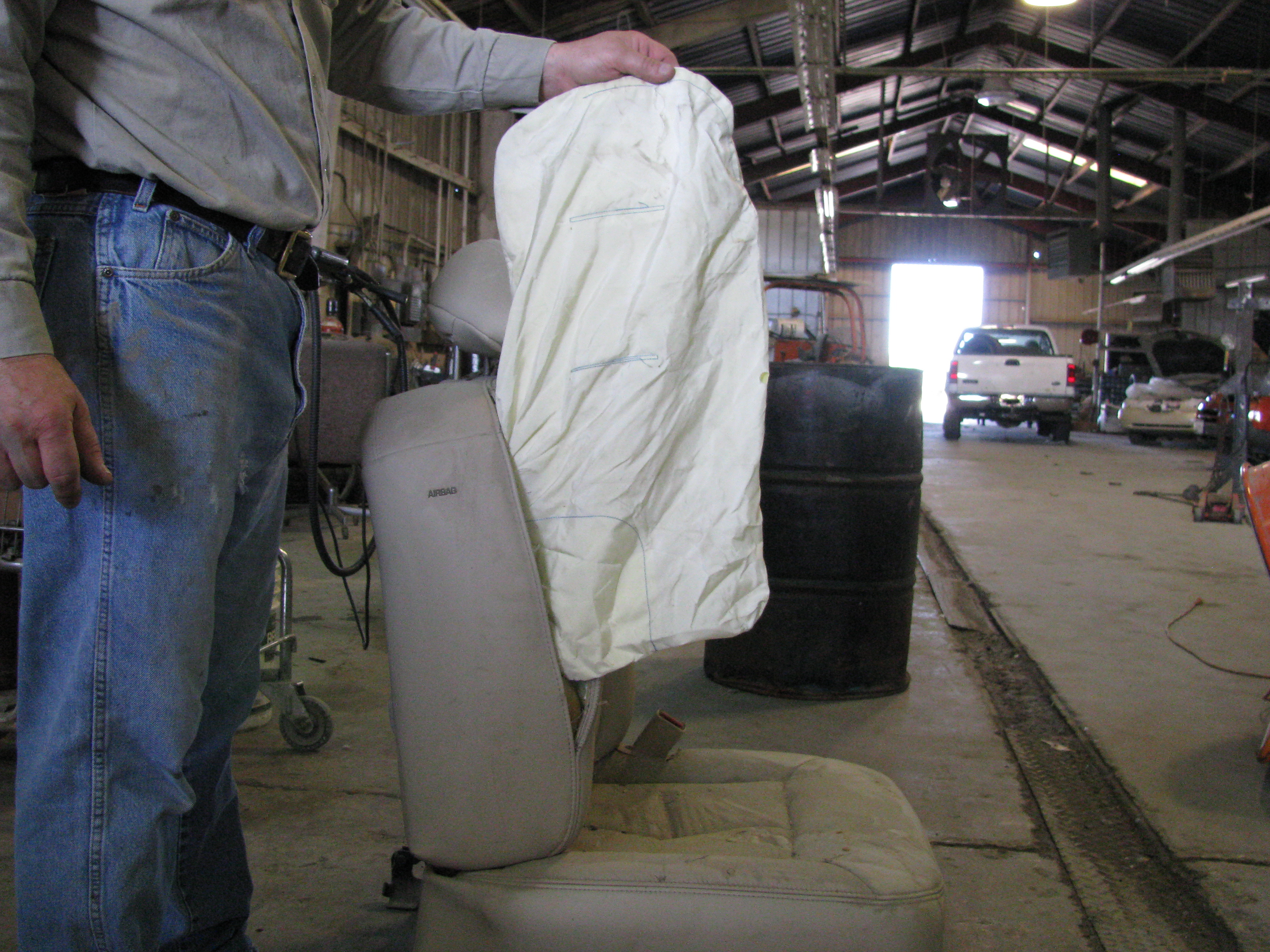
|
| Click picture to enlarge |
The head / torso type extend outward about 12 to 14 inches
and upward to about roof level and they are also about 5 inches thick when deployed.
Both of these use a stored gas inflator mounted inside the
back rest.
Caution! Like the door mounted
airbags, if these are deployed the rescuer can safely work around them, but if they are not deployed we must stay out of the
deployment zone until the electrical system is shut down and the capacitor drain time has expired.
Warning! The main concern with both
of these is in working from the door opening. If the door can be opened, rescuers must be aware that these airbags normally
follow the door panel when deploying. With the door open they will deploy outward at a 45 degree angle to about were a rescuer
would be standing. Both of these will deploy outward about 12 to 14 inches and the head / torso bag will extend upward
about 18 inches. Rescuers must also remember that all side impact airbags deploy much faster than frontal airbags and with
about the same force.
Video --- See why this is so vitally important
If
possible, it is a good idea to do most of the patient care from the back seat area. This keeps the rescuer out of both the
frontal and side impact deployment zones. If for some reason you must work from the door opening, it may be a good idea to
tilt the back rest portion of the seat so that the B post gives you some protection from the seat mounted airbag.
Warning! Remember that if the seat mounted airbag is not deployed, there is
likely a curtain airbag over your head, that is also not deployed.
Video --- Curtain airbag deployment
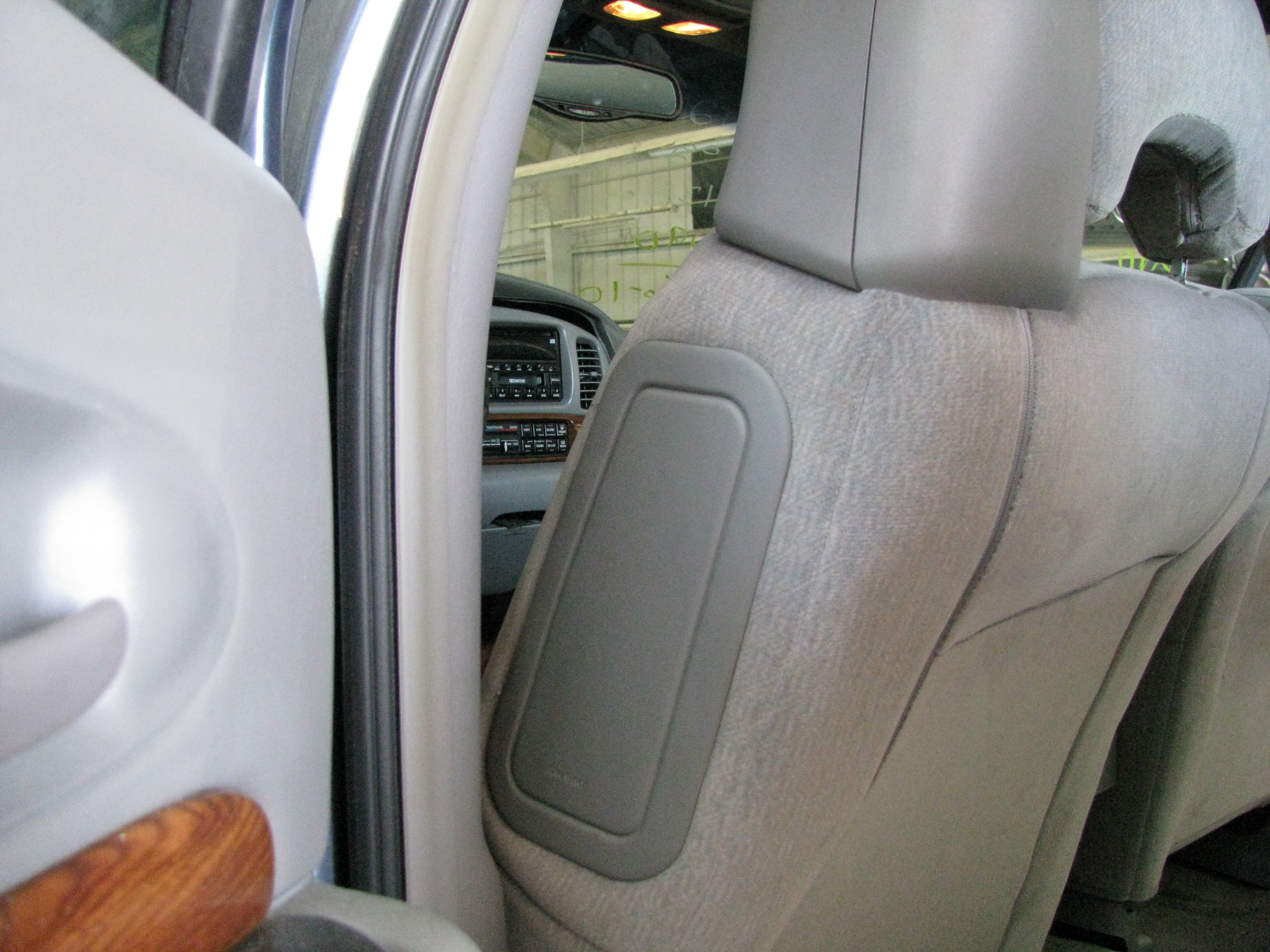
|
| Click picture to enlarge |
Like the door mounted, some of these can be visually
identified as a blowout panel in the outboard edge, of the back rest portion of the seat.

|
| Click picture to enlarge |
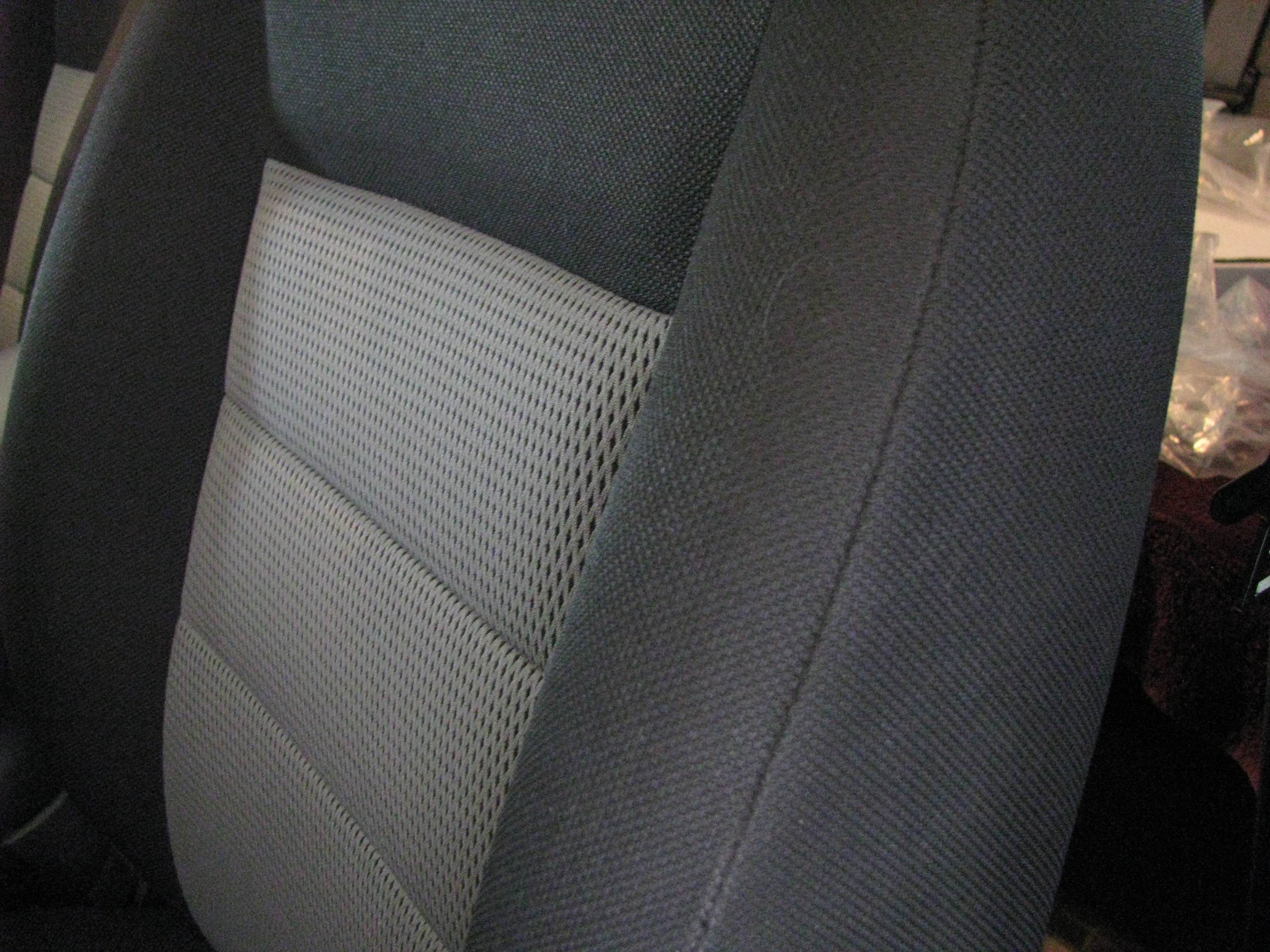
|
| Click picture to enlarge |

|
| Click picture to enlarge |
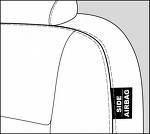
|
| Click picture to enlarge |
Unlike the blowout panel, these are much harder
to identify. The only way a rescuer can identify their presence is by a very small emblem embedded in the upholstery or a
tag sewn in the seam, that may say Airbag, or SRS.
This type is also used for rear occupant
side impact protection.
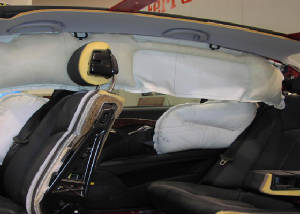
|
| Click picture to enlarge |
 . .
|

